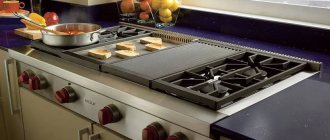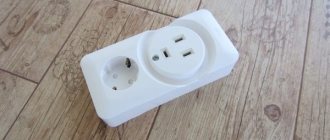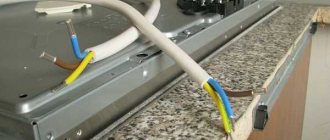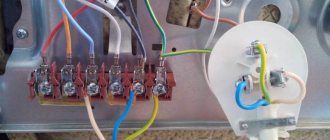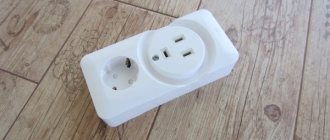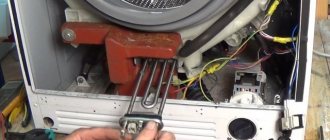By purchasing a glass ceramic hob, you can save a lot on electricity. In addition, the regulation system of such stoves is so precise that the temperature of the burners is very easy to regulate. Modern technology also has a drawback: induction cookers are made of heat-resistant glass, which can crack under the influence of certain factors. Cracks in the glass are the most common cause of stove failure and the only solution is to replace the glass on the hob.
Causes of defects
The main reason for damage to the glass of the hob is when heavy objects fall on it - a cast-iron frying pan or a massive cauldron.
It often happens that the surface withstands repeated impacts, and then cracks appear on it for no apparent reason. This occurs due to the formation of microdamages on the glass, which are difficult to see with the naked eye. And at one point the inevitable will happen, after which the glass-ceramic panel will not withstand it and will break.
Another reason for the appearance of microscopic defects on the induction panel is the use of steel wool and detergents with abrasive particles when cleaning. At first glance, the scratches are invisible, but sooner or later they will show themselves.
Damaged hob glass must be replaced.
In what cases is a built-in hob removed?
Modern manufacturers offer more and more advanced gas and electric models of hobs. As a result, there is a need to replace the failed panel with a new, more modernized one. To do this, it is necessary to dismantle the old surface. Having certain skills in the field of electrical engineering and gasification, the installation can be done with your own hands.
Removing a panel from a kitchen countertop
The built-in panel is usually removed in the following cases:
- The gas burner does not burn or the flame is weak - the reason is insufficient oxygen supply or excess carbon. Eliminated by disassembling the burner unit, the air ducts are cleaned, which provide the flame with a sufficient flow of oxygen;
Disassembling and cleaning the gas divider
Dismantling a built-in hob is not difficult. In the case of a gas cooking structure, it is extremely difficult to do without the involvement of qualified personnel, because all safety measures of SNiP, PPB and electrical safety rules must be observed.
Hob replacement procedure
Users faced with the problem of cracked hob glass have many questions that we are ready to answer:
Where to go to replace the hob
Have you seen cracks or other damage on the glass-ceramic surface? Don't know where to turn? You need specialist help!
In every city there are special service centers that repair both large and small household appliances. These can be either specialized points from, “Hansa”, “MBS”, or universal ones that repair any equipment and work with a wide range of faults.
Before asking for help from a particular company, make sure that it repairs devices from this manufacturer and whether they have the ability to provide original spare parts.
A glass ceramic surface for a branded hob cannot be purchased in a store. It can only be ordered from the manufacturer.
How to replace glass
Replacement of a cracked surface is carried out in several stages:
- Submitting an application for hob repairs. You can also submit a request to call a specialist by phone. The dispatcher will announce the exact date and time of the technician’s arrival.
- Diagnostics. Before proceeding with glass replacement, the technician must conduct a visual inspection of the equipment and assess the extent of damage. Trust a specialist in this matter, because it often happens that during diagnostics hidden damage is also revealed.
- Coordination of repairs. After the inspection, the specialist tells the client which part of the panel needs to be replaced, clarifies the list of upcoming works and announces their cost. The transition to the next stage is possible only if you agree with the list of works and the announced price.
- Repair work. If the cause of the malfunction is indeed cracked glass, then replacing it will take 2-3 hours. At first glance, it may seem that everything is simple; in fact, a specialist will have to painstakingly select and replace branded spare parts using special tools. Without knowledge and skills in this area, it will not be easy to cope with repairs.
- Testing and submission of work. The final stage of repair is checking the functionality of the induction surface and handing it over to the client.
Do-it-yourself hob repair
What do you need for daily cooking? High temperature and ability to control the heat source. As it turned out, there are not many types of home “hearth”.
- kerosene burner - 5 decades ago it was the main element in any kitchen;
- a gas stove is by far the most popular “hearth”;
- electric stove - can be a separate element or a built-in component of the kitchen.
Let's consider the last option in more detail. When visiting the kitchen was an exclusively utilitarian matter (that is, the housewife was only interested in the process of cooking), no one thought about the appearance of the electric stove.
Accordingly, from a technical point of view, it was a very primitive device:
- frame;
- heating element (spiral or heating element in its own housing);
- thermostat (not present in every model);
- mechanical heating regulator (spiral resistance switch).
It was possible to repair such a stove with a screwdriver and pliers in hand. Even the heating coil was easy to make with your own hands: nichrome wire was wound around an ordinary pencil. More advanced craftsmen used an electric drill and a wooden mandrel. The steel rod was inserted into the chuck and the winding process was much faster.
Repairing hobs without involving a specialist will require basic knowledge in the field of electrical engineering. If any electrical equipment has already been repaired, then this work can be done quite efficiently. How to repair hobs yourself will be discussed in detail in this article.
Is it possible to change the glass yourself?
Users ask this question quite often, especially after announcing the cost of repairs. The price is really high, but this is exactly the case when you should not save and it is better to seek the help of a specialist to avoid additional costs. Trying to repair a hob yourself can be difficult for several reasons:
- It is impossible to find branded glass that is suitable specifically for your hob without contacting the manufacturer of household appliances. Regular heat-resistant glass for a hob will not work, as it is not designed for the point temperature distribution that characterizes an induction cooker. During operation, tempered glass can not only crack, but also shatter into many pieces. For the hob, it is permissible to use only the original glass-ceramic surface. Sometimes you can find suitable used glass on classifieds websites. Its use is much cheaper and less dangerous, but where is the guarantee that it will not crack soon, like the previous one? Hobs sold as spare parts have most likely already been subjected to many different loads and have microdamages that will soon lead to glass replacement again.
- Replacing a glass-ceramic surface requires special skills, abilities and tools. Without special education, qualifications and experience, you can break panel parts when disassembling it, despite the fact that the list of works may seem simple. If damage appears on the glass of the induction panel, it is best to contact the service center and an experienced and reliable technician. Only the professionalism of the master will ensure the highest quality of the work performed and the shortest possible time for its implementation.
Advantages of qualified hob repairs:
- The ability to remotely call a technician, prompt response and carry out diagnostics and repairs at a time convenient for you.
- Rich experience of craftsmen, availability of special tools, equipment and work skills.
- Providing exclusively original, branded spare parts and components directly from the manufacturer.
- Long warranty period for spare parts and work performed. If a spare part installed by a technician breaks down, it will be replaced completely free of charge during the entire warranty period.
Stoves with glass-ceramic cooking surfaces are popular: they have heat indicators, are easy to use, and easy to care for. But often due to severe mechanical damage or prolonged heating, defects such as cracks and scratches occur. The extent of damage can vary - from a barely noticeable crack to cracks that occupy the entire surface area.
Manufacturers rating
Each manufacturer includes unique characteristics in their product that are designed to attract the attention of the consumer. The quality of the materials also differs. In order not to make a mistake with your choice, you need to carefully study the ratings of glass manufacturers for hobs.
- Hansa is a German company that supplies household appliances to 50 countries, but hobs are manufactured in Poland. A distinctive feature of the brand is modernity and accessibility. The latest developments ensure high quality. The range includes panels for induction, combined and gas appliances.
- Bosch is a German brand that amazes with the range of its products. The panels are equipped with an indicator of residual heat, heating power and a timer. The manufacturer uses glass ceramics of increased hardness, which ensures the quality and durability of the product.
- Gorenje is a Slovenian brand of stylish and modern hobs that combine convenience and beauty. The product is highly durable because it is made of glass ceramics and tempered glass.
- Hotpoint-Ariston is a company that provides high quality products at affordable prices. The brand has long established itself in the market, thanks to glass-ceramic hobs of various modifications.
- Electrolux is a transnational Swedish corporation that owns the famous brands of household appliances AEG, Zanussi, Zanker. The products are distinguished by their reliability, high quality assembly and components. The manufacturer works in all price categories, offering products for all categories of buyers. The cost of equipment depends on its functionality.
- Beko is a Turkish brand of household appliances that offers glass ceramic hobs. The products are distinguished by their stylish design, safety and technology.
- Miele is a German manufacturer offering luxury products. The price of the products is high, but quite justified, since the panels are of high quality, unique design and functionality. New developments allow you to place 5 burners with different energy carriers on the panel.
Causes of damage to the hob surface
If cracks were found on the hob, then this was preceded by the following factors:
- A sharp, strong touch to the surface of any objects. For example, you may drop a heavy pan, which is a common cause of glass ceramic failure. The fracture will look like a hole in the center where the impact occurred, and branching cracks.
- The stove became very hot due to several burners operating at full power for a long time. Usually the defect appears with a bang and can spread in different directions.
- It happens when the stove was installed incorrectly, and the powerful voltage supplied to the equipment destroys the hob. The surface begins to crack from the central part, after which the defects diverge, having sharp corners.
- Point damage, for example, a knife falling.
- Tearing off dishes that are stuck. For example, a frying pan or saucepan was placed on a sticky, uncleaned cooking surface. When heated, the dishes become glued and can only be torn off with a piece of glass ceramic.
- Escaped jam and sugar syrup are very difficult to remove from the stove. When heated sugar comes into contact with the surface, it penetrates into the structure of the glass-ceramic material. When cleaning the slab, the surface is damaged and chips appear.
Important! The last two reasons are caused by manufacturing defects and non-compliance with the rules when assembling the model. Common cases are when the surface is mounted very close to the edges, and during the heating process it bursts.
It should be remembered that faulty equipment powered by electricity is dangerous for any use. There are rules where safety must be observed:
- Any cooking on panels that have cracked should be avoided;
- Cleaning products for cooking surfaces must be specially designed;
- It is not recommended to touch metal utensils with wet hands, there is a risk of electric shock;
- Do-it-yourself repairs may result in a short circuit.
What is strictly forbidden to do?
- Start cleaning the hob before it cools down. Be sure to wait until the stove has cooled down before wiping the glass panel. This will help avoid the formation of cracks in the glass ceramics.
- Scrape off burnt food and grease using wire brushes, a knife or any abrasive material.
- Forget about aluminum pans, they leave marks on the glass ceramic hob that are difficult to clean.
- Use low-quality pots and pans for cooking, which leave carbon deposits or scratches on the stove.
- Try to constantly clean the induction hob from dirt, don’t leave everything for later. You need to wash the stove frequently and diligently.
- Keep plastic utensils away from the stove. If it melts and the plastic drips, it will be very difficult to clean the panel.
How to remove scratches from a stove surface
Appliances with a glass hob require special care. If you do not follow the instructions for using the device, scratches may occur on the stove.
You can remove scratches from the plane in the following ways:
- A solution of soda and water, applied to a soft textile cloth, should be rubbed in a circular motion. Then wipe the residue dry with a paper towel. The mixture should not be dry, otherwise the process of removing scratches will lead to the appearance of additional defects on the surface. Before starting the procedure, be sure to turn off the device from the network.
Removing scratches from the hob
Glass ceramics
Glass-ceramic sheets are usually made from quartz sand. The raw material, to which other materials are added, is melted at high temperatures in kilns to produce glass melt. A glass strip is formed, which is then cut to the dimensions required by the customer, the logo and decor are placed, ceramicized again, and the required glass-ceramic panel is obtained.
Advantages and disadvantages
Advantages and disadvantages of glass ceramics:
- efficient operation of heating elements, rapid cooling and heating;
- the ability to control the degree of heating;
- changing the heating area, uniform heating of dishes of different diameters;
- ease of care;
- durability;
- high strength, load resistance;
- Ease of Management;
- aesthetic appearance.
Flaws:
- the need to use flat-bottomed cookware for cooking (stainless steel is ideal);
- sensitivity to temperature changes;
- quite high price;
- the possibility of damage to the hob by water, including failure.
A serious disadvantage is the need to use special detergents.
Operating principle and which slabs it is suitable for
Glass-ceramic hobs are installed on gas, electric and induction cookers. Induction models are economical and safe, their efficiency reaches 90%. The low prevalence of such stoves is due to the high price and limitations in the use of kitchen utensils. If the apartment is connected to a central gas supply, preference should be given to gas models. This panel will fit perfectly into the design of a kitchen with a gas water heater. The plates made using the “gas under glass” technology are ideal for worn-out electrical wiring. Electric hobs are in great demand. The burners are heated using heating elements installed under the hob.
Types of coated slabs
Stoves with a glass ceramic hob most often have 2 or 4 burners. There are the following types of burners: rapid, halogen, induction. Rapid ones generate a large amount of heat when heated, the heating speed reaches 10-12 seconds. Halogen ones heat up in 3 seconds and consume a lot of electricity. The operating principle of induction burners is based on a heating mechanism; it is not the burner that is heated, but the bottom of the cookware. Cooking surfaces are divided into dependent and independent. The first ones are sold complete with the oven, the second ones separately.
Care of glass-ceramic surfaces
Glass ceramics require proper care. When carrying out work, it is recommended to use special detergents (sprays, pastes, creams). Special products for cleaning glass ceramics are sold in household chemical departments; Bang, Sanita, Shumanit and others show high efficiency. They not only provide effective removal of contaminants, after their use a thin silicone film remains on the surface, as a result, grease and food residues do not stick to it. In online stores, household appliance stores also sell specialized products for cleaning the hob from stove manufacturers Electrolux, Miele, Korting, etc. Their use will ensure proper care of the glass-ceramic surface.
It is recommended to wash the stove only after it has completely cooled down. Old stains of dirt and grease should be removed first. To remove stains and make the surface shiny, you can use glass cleaning products. When removing dried marks, special scrapers should be used. A soft cloth soaked in soapy water will help get rid of dirt near the burners. The use of brushes and products with abrasive particles in the detergent is not allowed. If there is no effect from cleaning in the usual way, you need to apply detergent, leave it for half an hour and remove.
What can cause cracks on the hob?
Cracks on the surface of the slab are dangerous for the following reasons:
- may cause the device to malfunction;
- allow excess heat to pass through;
- distort the appearance of the slab;
- Over time, more cracks will appear, causing the glass to completely collapse;
- Touching the stove can cause an electric shock.
Main causes of failure
- A burning smell appears when plugged in. In this case, you must first check the slab visually. To do this, turn it off from the power supply and inspect the burners. If the reason is accumulated and burnt food residues, remove them and rinse the surface well.
If the stoves are clean, but a burning smell still emanates from the equipment, then the problem may be a faulty wiring. You need to call a technician or try to repair it yourself.
You can repair glass-ceramic stoves yourself if you carefully study the operating instructions and know the structure of the electric stove. Otherwise, you need to call a specialist to your home.
Expert opinion
It-Technology, Electrical power and electronics specialist
Ask questions to the “Specialist for modernization of energy generation systems”
Scratches on a glass-ceramic hob: how to remove them forever Keep in mind that service centers usually provide a guarantee on their work for a period of 1-2 years, depending on the specific company. Ask, I'm in touch!
Causes of cracks on the hob surface
Have you found cracks on the glass-ceramic surface of the plate? Let's figure out where they could come from:
- as a result of the blow. This happens most often. Dropping something really heavy on the surface of the stove can damage it. Such cracks usually occur with branching;
- from overheating of the device. This can happen if the stove is operating for a long time or if all burners are running at full power at the same time. Most often, in this case, the cracks weave in different directions, mainly heading towards the edges of the slab;
- due to incorrect installation of the plate. Because of this, strong stress often arises, as a result of which a crack may appear on the surface of the slab;
- The plate is defective or incorrectly assembled.
How to glue a glass door to metal?
One of the aspects of the proper operation of clay stoves or fireplaces is the timely sealing of various leaks, cracks and crevices that can form on their surface and lead to a decrease in the efficiency of the device.
To seal them, a fairly wide variety of different materials can be used, but the most effective and durable among them is a specialized heat-resistant oven sealant. Such substances are presented on the market in a very wide variety and may differ in chemical composition, manufacturer and other parameters.
The need to treat various cracks and cavities that may appear on the masonry that makes up a stove or fireplace is due not only to the fact that in this case the efficiency of the device decreases, but also to safety requirements. If there are unprotected cracks and seams, the draft inside the fireplace may disappear, and the product may ignite.
Internal or external use of specialized heat-resistant furnace sealants allows you to ensure complete sealing of the device and the absence of gas or heat leaks. All such substances are characterized by high heat resistance (withstand operation at temperatures up to 1500 degrees), resistance to fire, as well as various products of fuel combustion.
The vast majority of oven sealants contain silicate components, as well as special reinforcement in the form of fiberglass. Once applied and dried, they form a very durable and fire-resistant joint that can last more than ten years and provides reliable protection against burnout.
When applying furnace sealants, it is necessary to thoroughly clean the edges of the crack from dust and dirt, and also degrease them. The substance can be applied at a temperature not lower than 0 degrees, and its polymerization (hardening) time depends on the brand of material you have chosen. You should know that it is best to use fresh sealants that were manufactured no earlier than three months before their use date. In this case, they will dry the fastest, and the bond strength will be the highest.
What to do when faced with such a problem
If any defects occur on the surface of the slab, you must seek help from a specialist. If the stove's warranty has not yet expired, then, to some extent, you are lucky. Just in case, take a photo of the defect and go to the service center:
- Have a professional come home to inspect the stove and determine if it can be repaired.
- If the warranty period has not yet expired, the service center employees can send the slab for examination to find out why the cracks appeared.
- If the cause of the breakdown is a manufacturing defect or other reasons that are beyond your control, the service center should either change the glass ceramics or issue a new stove altogether (in some cases a small additional fee will be charged).
- If the warranty has already expired, you can seek help from private companies that repair household equipment. Their workers will also be able to determine the causes of cracks and get rid of them.
Please note that if the defect was caused by an impact (i.e. it was your fault), you will have to pay to repair the stove or spend money on a new one. It all depends on how serious the case is. Be careful when working with equipment, and do not forget about the rules for its safe operation!
What to do if the required glass is not found
If you can’t find the right option, you can buy a special heat-resistant blank for the door and take it to a workshop, where they will make the required glass size.
The second option is to find regular glass and install it. The second option is impractical, since the element may not withstand high temperatures and become unusable again. Therefore, it is better to try to find good glass for the oven door.
In addition, you need to purchase a special heat-resistant glue. When installing a glass part, glue plays a big role, since if it cannot withstand high temperatures, the glass will fall out during cooking.
Heat resistant glue

